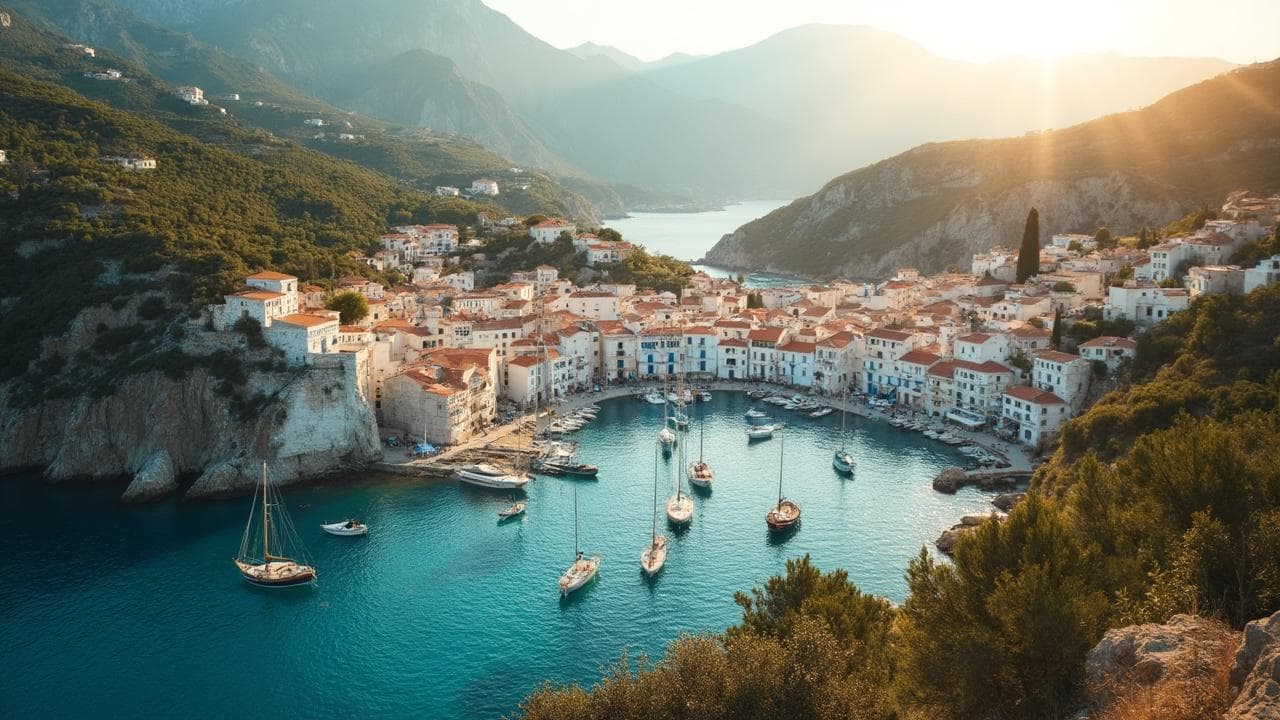Bali, an island paradise, promises an enchanting getaway regardless of the season. Its tropical climate, marked by warmth and humidity, and its rich and diverse culture make it a dream destination for many.
Bali balances bustling tourist spots and serene, untouched landscapes among Indonesia’s extensive archipelago. With an average temperature hovering around 86°F (30°C) year-round, deciding when to visit Bali is more about personal preference and interests than about weather alone.
In this article
- When is Bali's rainy season—and should I avoid it?
- What time of year is the cheapest in Bali?
- What if I go to Bali in peak season?
- Where should I stay in Bali?
When is Bali’s rainy season—and should I avoid it?
The seasonal shifts in Bali paint the island in distinctly different palettes, each with its appeal.
The island’s rainy season is from October to March. Contrary to what you might think, the tropical showers are typically brief, transforming the scenery without drowning out your plans.
I remember trekking through the lush greenery of Ubud after the rain; the colors were vivid, the air fresh, and the feeling of being in nature indescribable. Days are often sunny and adorned with crystal-clear skies, enabling a pleasant exploration of the island.
However, if engaging in water sports or beach activities tops your Bali bucket list, timing your visit during the dry season (April to September) might be more to your liking.
This period sees lower humidity and fewer rain showers, making it ideal for outdoor adventures. During a dive near the tranquil shores of Amed, the visibility was exceptional, revealing an array of marine life that was simply stunning.
What time of year is the cheapest in Bali?
Economically savvy travelers often seek the best deals on accommodations and flights, making the timing of their visit crucial. The low season—April, May, September, and October—presents a perfect window.
Not only are the crowds thinner, allowing for a more intimate experience with the island’s charms, but the cost of staying in some of Bali’s top hotels drops significantly. Airfares are more affordable, too, stretching your budget further.
Enjoying a turmeric latte at a quaint cafe in Canggu becomes remarkably accessible without waiting or securing a coveted spot for a sunrise yoga session.
During my stay in May, I reveled in luxury at a fraction of the peak season price, experiencing top-notch hospitality and serenity that would have been unattainable otherwise.
This savvy timing also allowed me to indulge in more experiences and culinary delights, from Warung-style dining to high-end restaurants, without worrying about breaking the bank.

What if I go to Bali in peak season?
July to August and the Christmas to Easter holidays mark Bali’s peak travel windows. During these periods, the island transforms, bustling with energy as families and tourists flood the beaches, temples, and markets.
While this vibrancy adds a layer of excitement, it also brings longer waits—from immigration at Denpasar airport to popular attractions like the iconic gates of Heaven at Pura Lempuyang.
Navigating through the crowded streets and packed beaches can be a challenge, but it also offers an opportunity to embrace the island’s lively spirit. Engaging with fellow travelers, participating in cultural ceremonies crowded with devotees, and feeling the pulse of Bali’s nightlife are experiences that thrive during the peak season.
Booking accommodations and experiences well in advance is advisable to mitigate peak season pressures.
Despite the crowds, finding moments of tranquility is still possible. Seeking out the less-traveled paths, like a hidden waterfall trek or a serene beach on the island’s north, can reveal the quieter side of Bali.
My journey through the village of Munduk and its breathtaking waterfalls was a highlight. They offer a peaceful retreat away from the peak season hustle.
Where should I stay in Bali?
Choosing where to stay in Bali is pivotal to shaping your experience.
Seminyak and Canggu are unbeatable for those drawn to the vibrant nightlife and surf culture. Here, luxury meets leisure, with many boutique hotels and private villas lining the shores.
Ubud, the island’s cultural heart, offers a different allure with its tranquil rice paddies, art markets, and spiritual centers. Staying in Ubud provides a gateway to exploring Bali’s inland beauty and engaging with its rich cultural tapestry.
For a more secluded retreat, Bali’s eastern and northern parts—Amed, Lovina, and Munduk—promise serenity amidst nature’s splendor. These destinations are perfect for those seeking peace and an opportunity to reconnect with nature.
My temporary home in Amed provided me with a serene base from which I could explore the underwater marvels during the day and gaze at the starlit sky by night, away from the island’s more frenetic pulse.
Echoing my ethos of adventure and authenticity, Bali unfolds as a multidimensional paradise, offering a spectrum of experiences to fit every traveler’s fantasy.
Whether the lush landscapes, the cultural richness, or the endless summer vibe draw you in, it’s key to identify the ideal time for your visit and align it with your personal travel aspirations.
Bali’s timeless allure beckons. It is ready to unveil its secrets and create unforgettable memories at any time of the year.




